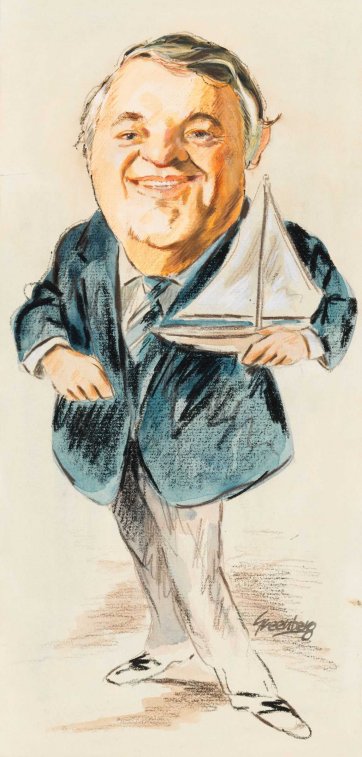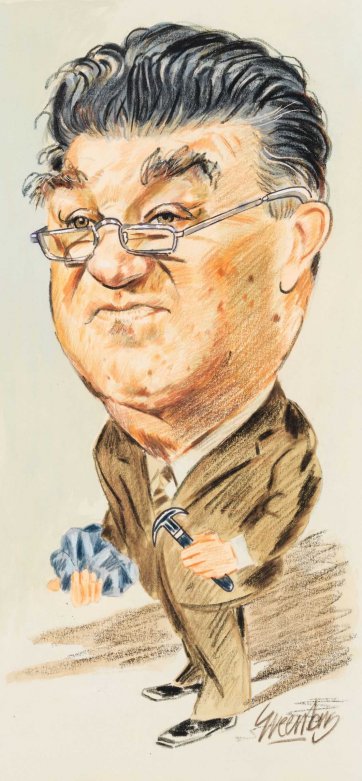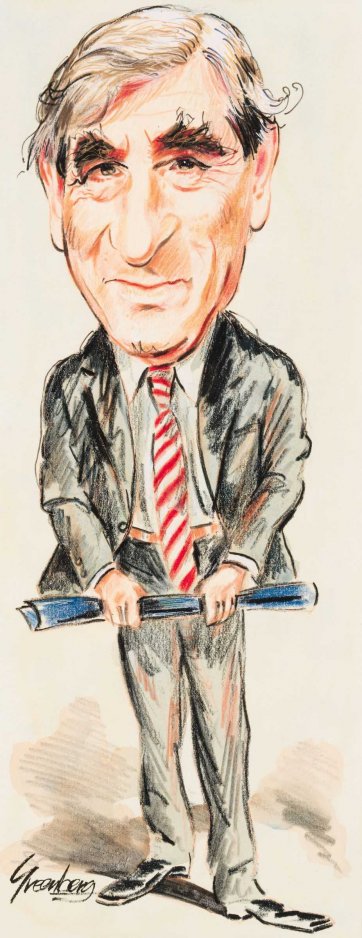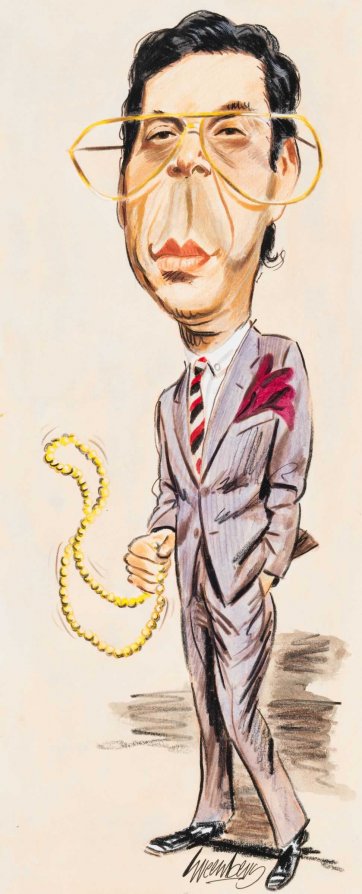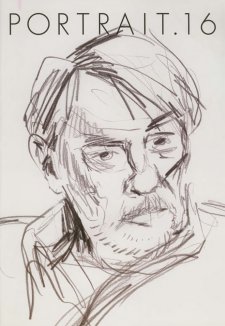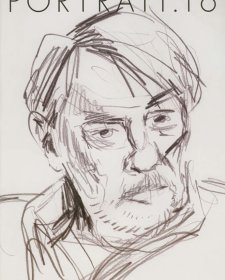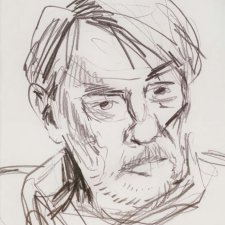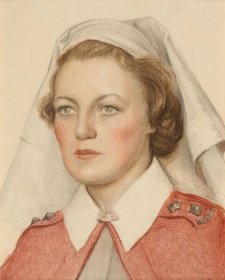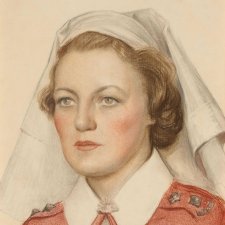"A good caricature, like every work of art, is more true to life than reality itself."
For many Australians the decade of the eighties conjures up disturbing memories of leg warmers, stonewash denim, and really big hair. For Australian music it was the decade of the synthesiser and the career of Australia's most famous pop icon, Kylie Minogue, was launched.
Some of the headline news stories of the eighties focused on events such as the Bicentenary, the official opening of the new Parliament House and the tragedies surrounding the Lindy Chamberlain case and the Ash Wednesday fires.
Another aspect of the eighties which is foremost in the collective Australian memory was the stock market and corporation boom which fueled a national sense that even an 'average Joe' could make it rich. During the early eighties the media and many Australians idolised the larger-than-life big business boys as heroes of the era.
A significant collection of caricatures of corporate business leaders and the movers and shakers of the economy in the 1980s was acquired by the National Portrait Gallery in 2001. The artist, Joe Greenberg, worked for several years during the 1980s with Business Review Weekly. He was employed to sketch weekly cartoon strips, write articles on antique collecting and draw a monthly full-page caricature portrait of the top corporate heads in Australia. It is from this latter undertaking that the National Portrait Gallery has drawn its collection of thirty-seven caricatures.
The faces in this collection will be familiar to anyone who lived through the 80s in Australia. They present an intriguing snapshot of a very specific decade in Australia's history. Not surprisingly, given the times, very few women feature in this collection of portraits. Even more notable is the number of big business heroes whose status slipped somewhat during the following decade.
Not all of these corporate characters became known as the crooks of the 'decade of decadence'. Instead, some of their businesses just failed quite spectacularly. The corporate economy made headline news when business after business began to decline or went out with a big bang during the recession in the early 1990s. Bob Ansett, depicted in Greenberg's portrait grinning from ear to ear, grasping a stuffed boxing kangaroo and cradling a toy car, was personally bankrupted when Budget, the car hire company he built up from scratch, went into receivership in the late eighties. John Spalvin's company AdSteam (Adelaide Steamship) didn't survive past 1990, belying the confident stare and model ship supported in the crook of his arm that Greenberg portrayed just a few years earlier.
However, there are still the enduring success stories amongst the characters in this collection. Reinforcing the ideology that hard work could equate to economic accomplishment, many of the successful businessmen were immigrants to Australia who arrived with hardly a cent to their name. A refugee from Estonia, Sir Arvi Parbo spent years in refugee camps before coming to Australia with nothing, only to establish himself as a business giant heading up one of Australia's biggest and richest mining companies, Western Mining Company (WMC). To emphasise Parbo's 'hands on' approach to business, Greenberg has depicted him in an expensive suit and shoes whilst holding a lump of rock and a hammer. Victor Smorgon also built his lucrative reputation as an industrial entrepreneur after beginning his life in starvation and poverty during the turbulent years when Russia moved from a tsarist regime to communism.
G. J. Dusseldorp, of Lend Lease fame, came to Australia in 1951 with $10,000 and a handful of Dutch workers on a contract to build 200 houses for the Snowy Mountains Authority at Cooma.
Taking his cue from press photographs and television, Joe Greenberg's spontaneous working method, canny observation skills and love of current affairs enables him to convey his subjects in an informal but detailed manner. Greenberg began his career studying graphic art and painting under Sir William Dargie at Swinburne University. After serving during World War II, Greenberg resumed his studies at Swinburne University with the assistance of the war rehabilitation program. Shortly after graduating, he was employed by the Herald and Weekly Times as the book and promotions illustrator. Since then his extensive career has included both illustrating and art direction with many leading publications in Australia and overseas. From 1978 he retired from advertising to freelance as a painter, illustrator, writer and cartoonist and continues in these endeavours today.
As art historians like Eric Gombrich have discussed, the art of caricature or comic art, has been utilised for centuries. The ancient Greek comic dramatists became so popular that characters from their plays were often illustrated in vase paintings. Medieval artists knew how to use laughter to enforce a moral lesson in their comic woodcut prints. It was during the Reformation that images began to be utilised for political means with Luther commissioning a series of defamatory comic prints of the Pope to be published. The National Portrait Gallery also holds in its collection an impressive collection of caricatures published in Vanity Fair during the late 1880s.
Most caricature artists would testify that they work at the coalface of a love/hate profession. The personal nature of their portraits combined with the inherent use of irony and political commentary often prompts impassioned responses from both the sitters and the audiences of the print material in which they are published. Joe Greenberg's career has been no different. He recalls that Victor Smorgon was particularly affronted by his depiction replete with a string of sausages looped around his neck. The reference was to Greenberg's memory of purchasing meat from the teenage Smorgon when he was working at his parent's kosher butcher store in Melbourne during the 1940s. One the other hand, many of Greenberg's subjects liked their depiction so much that they went out of their way to purchase the original drawings from him. Amongst a few of the hand-delivered purchases were Robert Holmes à Court, Sir Roderick Carnegie and Christopher Skase.
Caricature art enjoys great popular appeal despite its reputation as not being a 'serious' art form. It has been suggested that while political humour may imbue the work with great contemporary appeal, this may not be easily understood by following generations. However, in this case, Greenberg's collection of corporate caricatures is still incredibly relevant to the national collective memory. His portraits in the National Portrait Gallery illustrate succinctly the dichotomies at work in Australian society during the 1980s. It is clear, with the benefit of hindsight, that the rags to riches fairytales of the 80s were tenuously fragile with many a villain created instead.

